Everyday cleaners can hide life-threatening dangers.
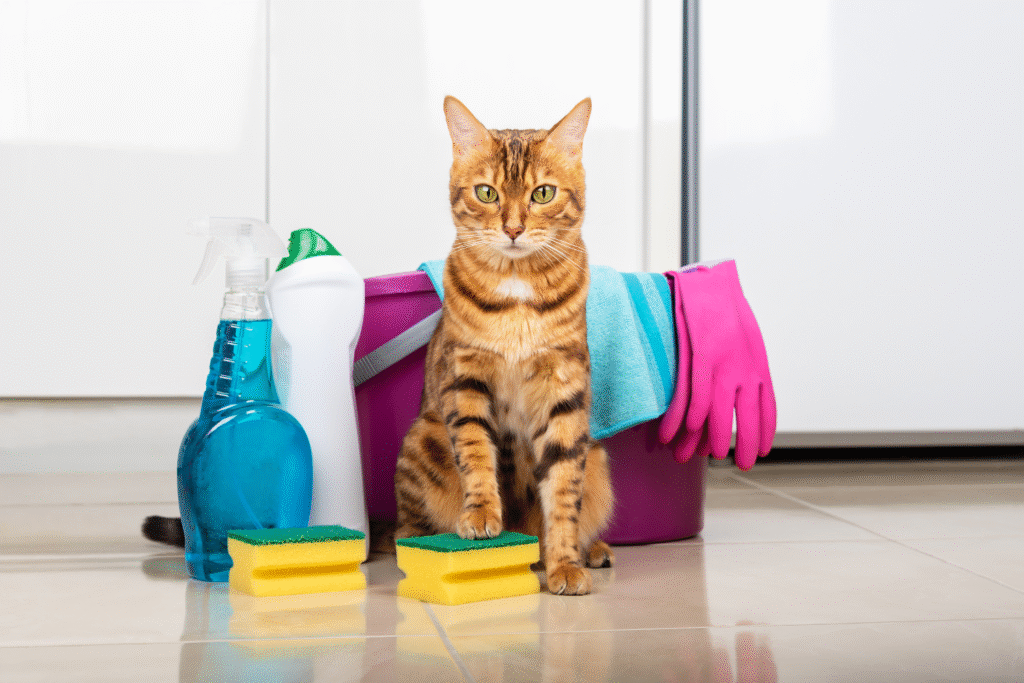
Most cat owners assume danger comes from outdoors, but the real threat often waits under the kitchen sink. Cats are uniquely sensitive to many chemicals that humans and even dogs tolerate without issue. Their tiny livers can’t process toxins as efficiently, meaning a harmless spritz of disinfectant or whiff of essential oil can become deadly. From laundry rooms to bathrooms, the invisible hazards add up. Understanding which chemicals pose the greatest risks isn’t about paranoia, it’s about keeping that curious nose safe from silent household dangers.
1. Bleach can trigger lethal respiratory and digestive distress.
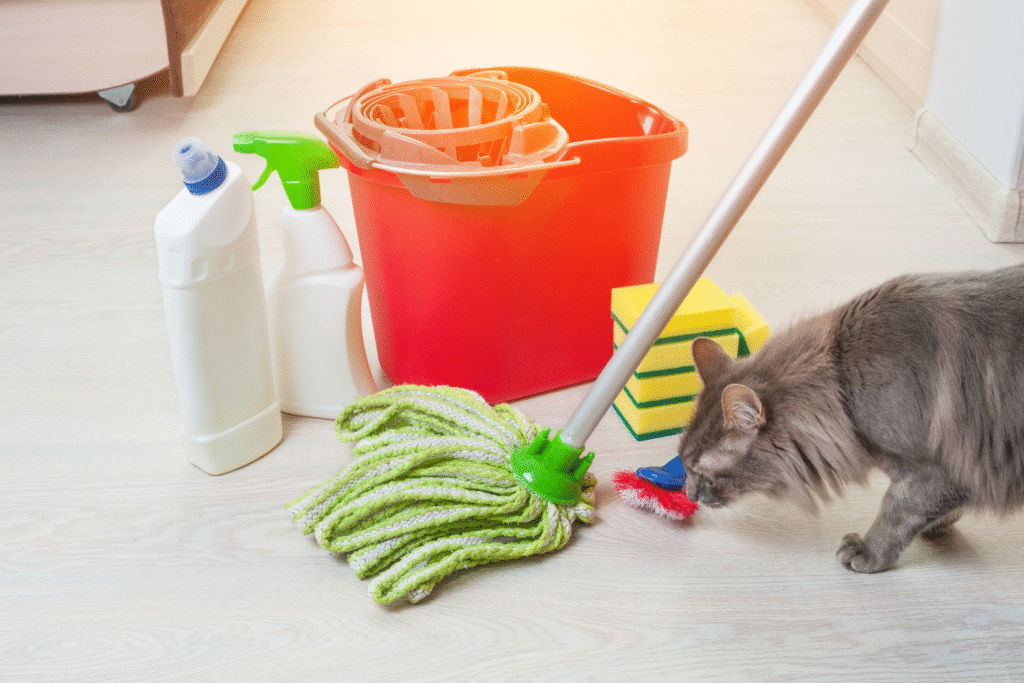
Even small amounts of bleach can wreak havoc on a cat’s system. As stated by the ASPCA, exposure can cause vomiting, drooling, and difficulty breathing. The fumes alone can irritate delicate airways, while ingestion leads to chemical burns in the mouth, throat, and stomach. Cats often encounter bleach on freshly cleaned floors or fabrics where residue lingers longer than most owners realize.
The real danger is how subtle it looks. A cat might simply lick its paws after walking across a mopped area, ingesting enough to cause damage. Diluted solutions may seem safer but remain risky because of how cats metabolize chlorine compounds far differently than humans.
2. Phenol-based cleaners are almost instantly toxic to cats.

Products containing phenol, often found in pine or Lysol-style disinfectants, are among the most dangerous for felines. According to the Pet Poison Helpline, phenols are absorbed quickly through the skin or when cats groom themselves after touching treated surfaces. Once in the bloodstream, they damage the liver and central nervous system, sometimes fatally so. Cats lack the enzymes needed to break phenols down safely, meaning even trace exposure can overwhelm their organs.
Owners often use these cleaners for their “fresh” scent, unaware they leave a toxic film invisible to the eye. The chemical’s persistence means cats can be poisoned days later, just by curling up on a cleaned spot.
3. Essential oils can poison cats through skin or air.

While trendy in diffusers and sprays, many essential oils, especially tea tree, eucalyptus, and citrus, contain compounds cats can’t metabolize. As reported by the Journal of Feline Medicine and Surgery, even airborne exposure can cause lethargy, tremors, or liver failure. The oil droplets settle on fur and are ingested during grooming, turning something marketed as “natural” into something lethal.
The appeal of aromatherapy masks the hidden risk. Diffusers running for hours fill enclosed rooms with micro-particles that irritate cat lungs. It’s not the smell that’s soothing, it’s the quiet harm that follows unnoticed until symptoms appear.
4. Fabric softeners leave chemical residues on bedding and fur.
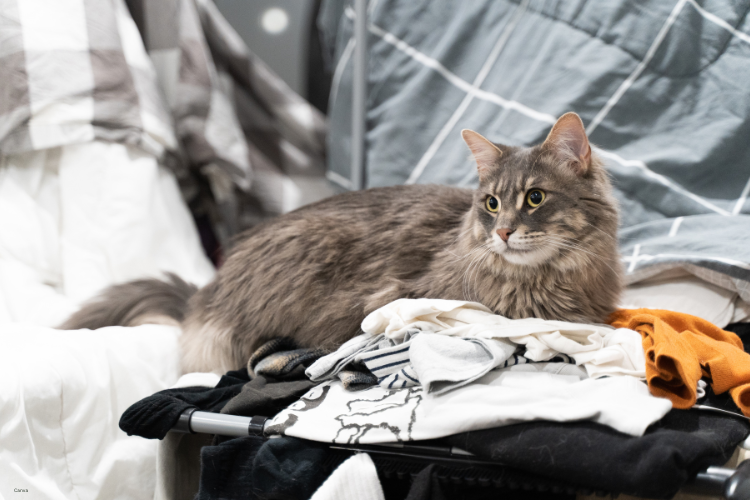
Most liquid softeners and dryer sheets contain quaternary ammonium compounds, which can cause vomiting, drooling, and skin irritation. These chemicals cling to fabrics even after drying, meaning your cat’s blanket or your pillow could carry irritants for days. Unlike humans, cats absorb chemicals through their skin and mouth when grooming, magnifying the exposure.
In multi-cat homes, grooming each other can spread the problem quickly. It may start with sneezing or watery eyes, but continuous exposure builds up to full respiratory inflammation. Switching to unscented, chemical-free alternatives can reduce chronic irritation many cat owners mistake for “seasonal allergies.”
5. Oven cleaners and drain uncloggers burn on contact.

Strong alkaline chemicals designed to dissolve grease or clogs are corrosive enough to harm human skin, and cats have no defense at all. A single paw dipped in residue can cause chemical burns that blister and ulcerate within hours. The fumes themselves are caustic, inflaming airways and eyes.
Because these cleaners are used in enclosed spaces like bathrooms or kitchens, the fumes linger even after rinsing. A cat exploring countertops long after cleaning can still inhale or absorb residue, making proper ventilation and sealed storage essential.
6. Antifreeze is sweet-tasting but instantly deadly.
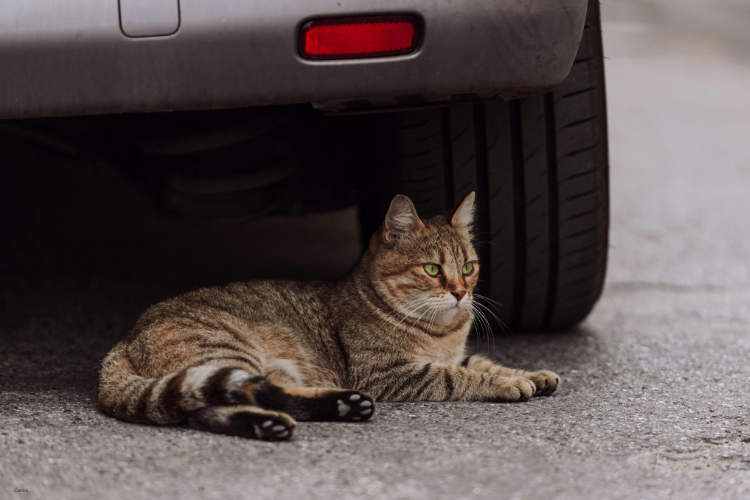
Ethylene glycol, the key ingredient in most antifreeze, attracts animals because of its sweetness. Just a teaspoon can kill a cat. Once ingested, it crystallizes in the kidneys, leading to rapid organ failure within hours. Even a few drops from a leaking car or spilled bottle in the garage can be fatal.
What makes antifreeze particularly cruel is how quietly it works. Early symptoms—wobbling or lethargy—can look like harmless fatigue. By the time kidney damage becomes evident, it’s often irreversible. Using propylene glycol-based alternatives helps reduce, but not remove, the danger.
7. Air fresheners and scented sprays harm feline lungs.

Aerosol sprays, plug-ins, and scented candles emit volatile organic compounds that irritate sensitive respiratory systems. Cats breathe closer to the ground, where heavier chemical particles linger. Over time, chronic exposure can trigger coughing fits, wheezing, or asthma-like reactions.
Even “pet-safe” labels can be misleading, as fragrance formulas often remain proprietary. If a product makes you cough or sting your eyes, imagine what it does to a six-pound animal whose lungs are a fraction the size. Fresh air and open windows remain the safest deodorizer your cat will ever need.
8. Flea collars and some insect sprays contain neurotoxins.
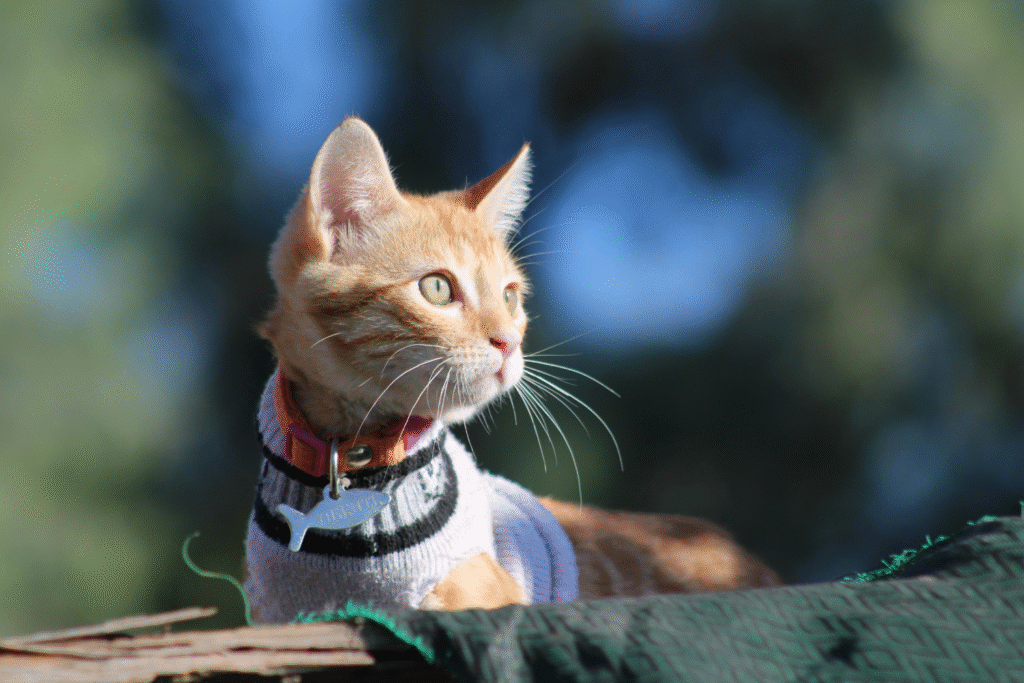
While meant to protect, certain older flea collars use organophosphates and carbamates—compounds that disrupt nerve function. Cats exposed to these chemicals can drool, twitch, or collapse within hours. Even licking another pet wearing one of these collars can be enough to cause toxicity.
Modern flea prevention products are safer but not interchangeable between species. Using dog treatments on cats remains one of the leading causes of poisoning calls to veterinarians. Always confirm a product’s species approval before applying anything labeled “multi-pet.”
9. Paints and varnishes can cause nervous system damage.
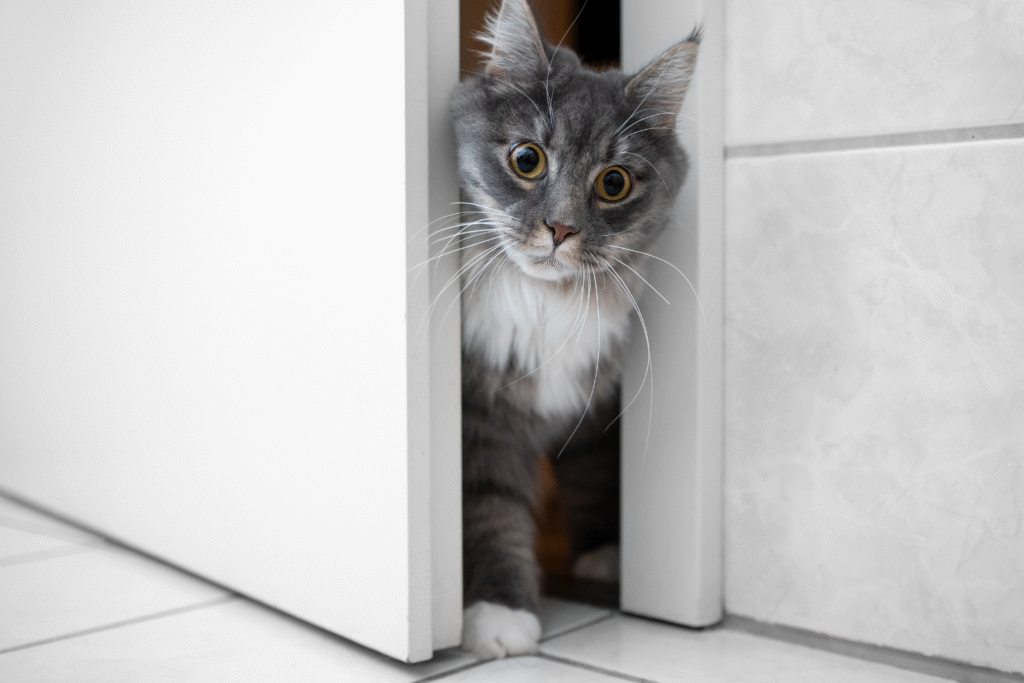
Wet paint, solvents, and varnishes release heavy metals and hydrocarbons that enter through inhalation or accidental licking. A cat wandering near freshly coated walls or furniture may absorb toxins through paws or fur. Short-term exposure can trigger nausea and dizziness, while chronic contact affects coordination and appetite.
Many homeowners overlook the drying period as a risk window. Even after the surface feels dry, vapors can persist for days. Keeping cats out of freshly painted rooms for at least forty-eight hours prevents both inhalation and skin absorption.
10. Toilet bowl tablets and cleaners poison through curiosity.
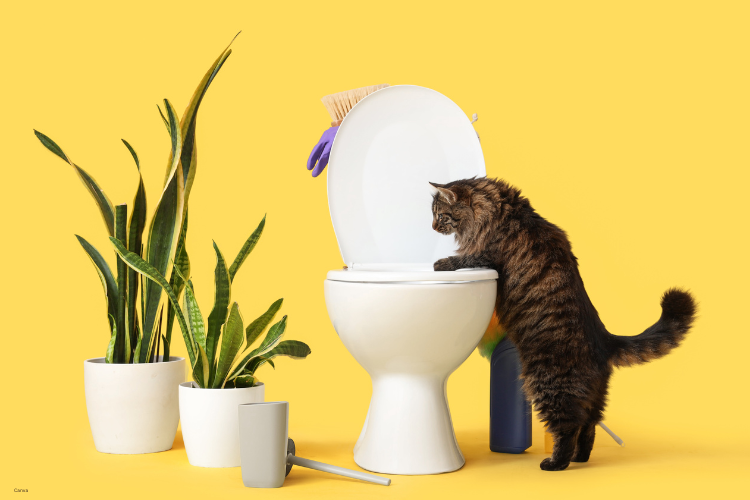
Drop-in toilet tablets and rim hangers often contain concentrated chlorine and surfactants. Cats that drink from treated toilets ingest enough chemicals to cause ulcers or internal burns. The water may appear harmlessly blue or clear, but the dissolved compounds remain active between flushes.
Because bathrooms are cool and quiet, cats often sneak in for a drink without anyone noticing. The fix is simple but crucial: keep toilet lids closed and avoid chemical tablets altogether. Fresh water bowls should always be accessible, because thirst and curiosity are a dangerous mix for a cat in any home.
